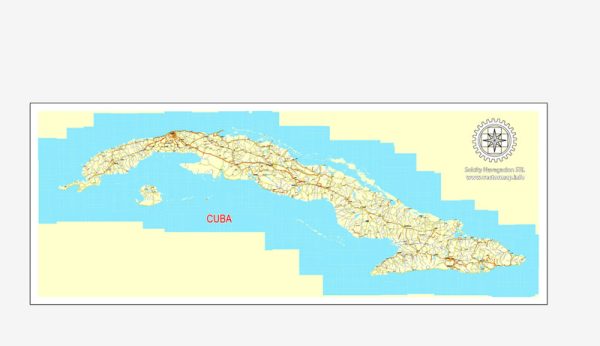Cuba’s history of urban development is a complex and dynamic narrative that spans centuries, marked by various influences such as indigenous cultures, Spanish colonization, African traditions, and revolutionary movements. Here is a brief overview of key periods in Cuba’s urban development:
- Indigenous Settlements: Before the arrival of Christopher Columbus in 1492, the island was inhabited by various indigenous groups, such as the Taíno people. These societies had their own distinctive forms of settlement and urban organization, but their impact on later Cuban urban development is limited due to the drastic population decline following the arrival of Europeans.
- Spanish Colonial Period (1492-1898): The Spanish colonial era significantly shaped Cuba’s urban landscape. The Spanish established cities with a grid layout, featuring a central plaza, a cathedral, and government buildings. Havana, founded in 1519, became a major hub for trade and culture in the region. Spanish colonial architecture, with its use of courtyards and arcades, still characterizes many old town areas in cities like Havana and Trinidad.
- African Influences: The forced migration of African slaves to Cuba during the colonial period had a profound impact on the island’s culture and urban development. African traditions influenced not only the demographic composition of cities but also aspects of music, dance, and religious practices. This cultural diversity is visible in the architecture and street life of Cuban cities.
- 19th-Century Expansion: In the 19th century, as sugar production and trade flourished, Cuban cities experienced significant economic growth. This period saw the construction of grand mansions, theaters, and public spaces, reflecting the wealth generated by the sugar industry. However, this prosperity was not evenly distributed, leading to social disparities.
- Republican Era (1902-1959): After gaining independence from the United States in 1902, Cuba entered a period of economic and social development. Cities continued to grow, and new architectural styles, such as art deco and eclectic designs, emerged. Havana became a glamorous destination, attracting international tourists and businesses.
- Revolutionary Period (1959-Present): The Cuban Revolution of 1959 led by Fidel Castro and the subsequent socialist government had a significant impact on urban development. The government prioritized social services, education, and healthcare, leading to improvements in housing and infrastructure. However, the political and economic isolation of Cuba during the Cold War also hindered development.
- Special Period (1990s): The collapse of the Soviet Union in the early 1990s resulted in a severe economic downturn in Cuba, known as the “Special Period.” During this time, the country faced challenges, including shortages of resources and a decline in living standards. However, Cuba also saw innovations in sustainable urban development, such as urban agriculture and alternative transportation.
- Contemporary Urban Challenges: In recent years, Cuban cities have faced challenges such as aging infrastructure, housing shortages, and the need for modernization. The government has initiated urban renewal projects and invested in tourism infrastructure to boost the economy.
Cuba’s urban development reflects a complex interplay of historical, cultural, economic, and political factors. The island’s cities continue to evolve, blending traditional influences with contemporary challenges and innovations.


 Author: Kirill Shrayber, Ph.D.
Author: Kirill Shrayber, Ph.D.